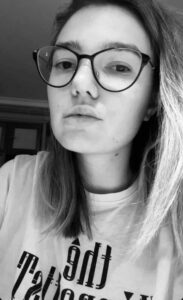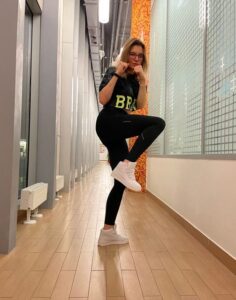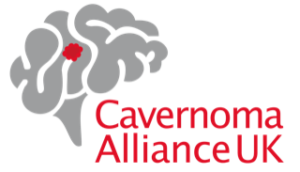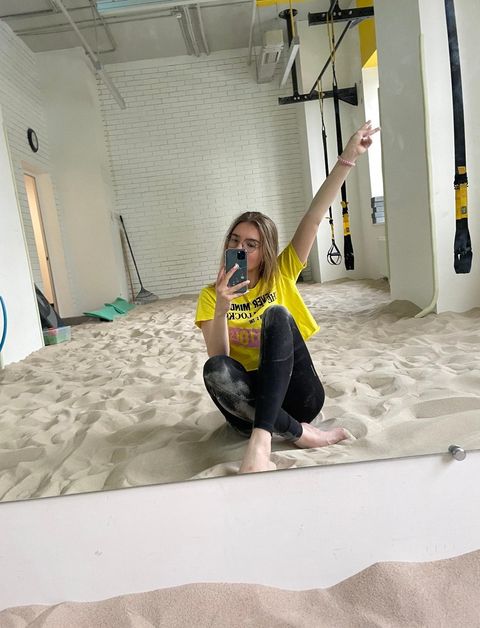 Sveta suffered a big brain bleed in 2017 leaving her with balance and coordination issues, and paresis of several of the muscles on the right side of her face and body. Her cavernoma journey has led her to become a visual coach, helping people who have the same issues are her. You can find Sveta on Instagram via her account @rookie_biatch, where she documents her training and rehabilitation work – from training in sand and dancing for balance, to drawing and art for fine motor skills.
Sveta suffered a big brain bleed in 2017 leaving her with balance and coordination issues, and paresis of several of the muscles on the right side of her face and body. Her cavernoma journey has led her to become a visual coach, helping people who have the same issues are her. You can find Sveta on Instagram via her account @rookie_biatch, where she documents her training and rehabilitation work – from training in sand and dancing for balance, to drawing and art for fine motor skills.
We asked her some questions about her experience of cavernoma and how she got to where she is now.
Where is/was your cavernoma located?
My Cavernoma was located in brainstem.
When were you diagnosed?
I was diagnosed at the age 21, I am now 25.
How did you find out about your cavernoma?
I woke up in the morning and realized that I had double vision. My left eye turned to the nose. I didn’t pay attention to it because I thought it was stress symptoms. I went to university and returned home as normal. We eventually decided to visit an ophthalmologist to understand why I had double vision.
Tell us about your decision to have brain surgery?
My cavernoma was located in the brainstem and it bled into the cerebellum; I was told there was a huge risk during operation because of it’s dangerous location but the surgeons needed to eliminate this Cavernoma from my brain. The operation lasted 6 hours.
What symptoms did you experience post-surgery?
- Left side Facial paresis
- Left eye turn to the nose (double vision, I try to turn my neck to avoid double vision)
- Right side paralysis of the body.
- Loss of control of the body
- Loss of balance and coordination (due to location in cerebellum)
- Loss of sensitivity and fine motor skills.
Tell us a bit about the activities you do for rehab?
(2017) 1 year after surgery :
Home gym to be able verticalize from my wheelchair and go to university (with the help of parents or friends). Face gym/facial exercises everyday – even until now!
(2018)2nd year after surgery:
Finished Architectural university (this was a very hard time for me)
I started training at a Rehabilitation centre
(2019) 3rd year after surgery:
I continued my training at the Rehab center
Started visiting my psychologist.
(2020) 4th year after surgery:
Started visual therapy (with Franco, a visual and cognitive coach – you can find him on Instagram at @francolococo_neurovisual_coach).
Tried driving lessons.
Started dancing – for coordination, memory, repeating after the teacher and looking in the mirror
Training in sand – for balance, proprioception, jumping, gait and strength Nordic walking – to improve coordination in the arm and leg.
I also continued visiting my psychologist and doing my face gym and facial exercises
Visual training
(2021) 5th year after surgery:
I started teaching cognitive training both with Franco and on my own.
I started body combat training (boxing in group) which has helped me to overcome my fears of training in a group. I was afraid of losing my balance and my gait and what I would look like while training.
I started doing aqua gym in a group too.
psychologist (mental work)
face gym everyday 🙂
Now I feel much more independent, confident and strong, although I still have weak fine motors skills, fingers and wrist on my right hand. I still have facial paresis and paresis of the muscles in my left eye. 
Balance was much more important for me to begin with, so now it’s time for me to improve my writing and drawing skills.
I am very happy with my recovery! I have gained a huge amount of experience in neurology and I’m still learning and trying new things. It’s unbelievable!
It seems like my journey was meant to bring me to the place I’m at now 😊

